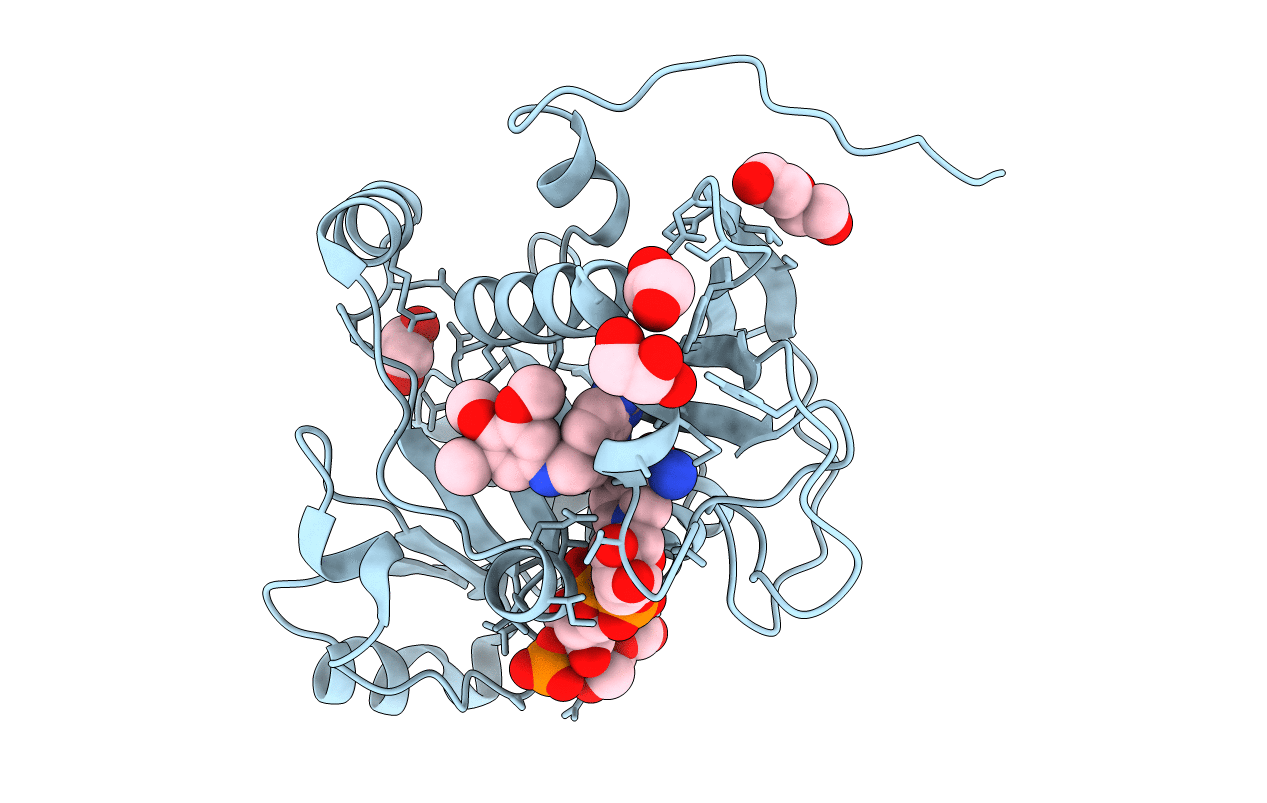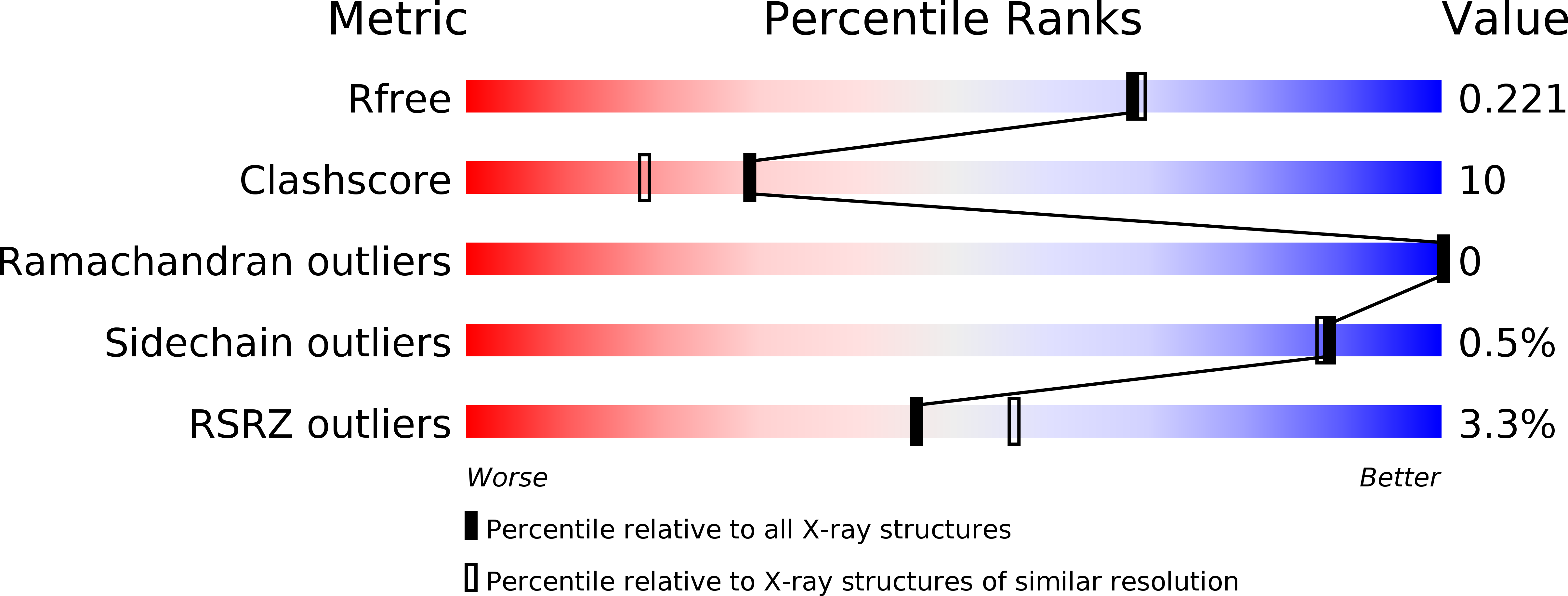
Deposition Date
2015-01-23
Release Date
2016-02-24
Last Version Date
2023-09-27
Entry Detail
PDB ID:
4XT8
Keywords:
Title:
Crystal structure of Rv2671 from Mycobacterium tuberculosis in complex with NADP+ and trimetrexate
Biological Source:
Source Organism:
Host Organism:
Method Details:
Experimental Method:
Resolution:
1.95 Å
R-Value Free:
0.22
R-Value Work:
0.17
R-Value Observed:
0.18
Space Group:
C 2 2 21


